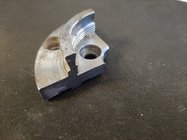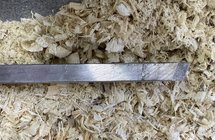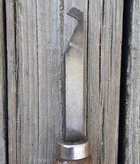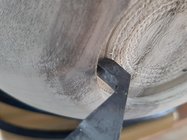I own a dovetail chisel (really a scraper with a dovetail shape on the end I guess) made by Nova which will cut the the required angle for Nova jaws on the edge of the recess. I realize that there are a number of ways to cut required angle on the jaws but, over the past 3 years while learning to turn, I have found that this tool makes that task extremely easy and foolproof and I always use that tool when creating a recess on a bowl bottom.
However, I have begun to use tenons more often rather than recesses and this tool won't perform the same task to create the required angle on the tenon (since the edge of the tool is angled just as a scraper would be angled downward). So, finally my question . . .
Could I use. the tool on the tenon by turning in reverse? Or is that a dangerous thing to do?
I realize that I could, through trial and error, cut the needed angel into a square scraper and again, I realize that there are a number of ways to create the angle on the tenon but using the Nova dovetail chisel would be the simplest and would help me to get an accurate angle until I can master doing it with a skew, detail gouge, or other tools.
However, I have begun to use tenons more often rather than recesses and this tool won't perform the same task to create the required angle on the tenon (since the edge of the tool is angled just as a scraper would be angled downward). So, finally my question . . .
Could I use. the tool on the tenon by turning in reverse? Or is that a dangerous thing to do?
I realize that I could, through trial and error, cut the needed angel into a square scraper and again, I realize that there are a number of ways to create the angle on the tenon but using the Nova dovetail chisel would be the simplest and would help me to get an accurate angle until I can master doing it with a skew, detail gouge, or other tools.





